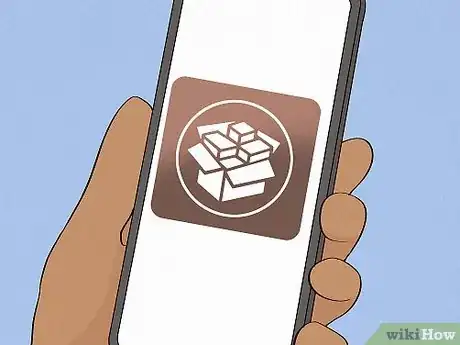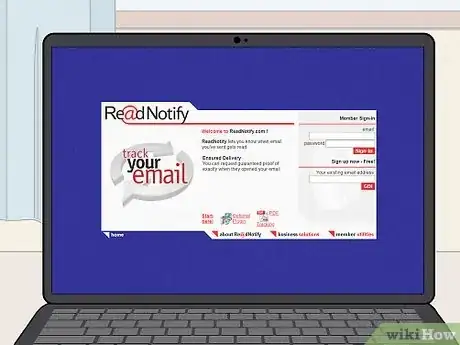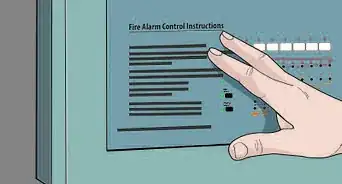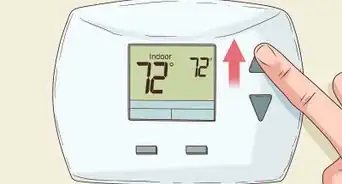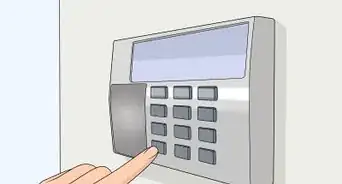This article was co-authored by Luigi Oppido. Luigi Oppido is the Owner and Operator of Pleasure Point Computers in Santa Cruz, California. Luigi has over 25 years of experience in general computer repair, data recovery, virus removal, and upgrades. He is also the host of the Computer Man Show! broadcasted on KSQD covering central California for over two years.
There are 8 references cited in this article, which can be found at the bottom of the page.
wikiHow marks an article as reader-approved once it receives enough positive feedback. This article has 12 testimonials from our readers, earning it our reader-approved status.
This article has been viewed 564,099 times.
Ever had the feeling you were being watched? If you think you're under surveillance, you're probably experiencing a lot of stress. How can you tell who to trust? With a little awareness, you can probably determine whether or not the threat is real or in your head. See Step 1 below to learn how to spot and lose tails, check if your phone is being monitored, and protect your emails.
Steps
Checking for Tails
-
1Ask yourself why you would be followed. Tailing someone takes time and resources, and most local authorities won't waste time trying to tail average citizens. Private investigators and angry exes are a different matter. Before you start getting paranoid, ask yourself if you actually have anything to fear.[1]
-
2Be aware. The main key to identifying tails is to stay aware of your surroundings at all time. Don't keep your nose stuck in your phone; keep your eyes up and monitoring the world around you. If you're not paying attention, you'll never know if you're being followed.[2]Advertisement
-
3Avoid looking over your shoulder. When you start acting suspicious, your tail will notice and either drop back or stop in order to try again later. If you feel like you're being followed, keep acting like you don't know.
-
4Slow your pace. This applies to both walking and driving. If you're walking, slow down and look in some store windows or at your phone. Make sure to keep one eye on your surroundings while doing so. If you're driving, move over to the slow lane and drive the speed limit.[3]
-
5Call the police. If you think you are legitimately being followed and that you are in danger, you should call the police immediately. Try to stay in crowded, public areas while you wait for local law enforcement to respond.[4]
- Large crowds can help you identify the person tailing you so that you can give the description to the police.
- If you call the police and a local undercover is following you, it will usually back off. If it is a state or federal officer tailing you, then they will likely get pulled over by the local police. If it is a private investigator, they may get ticketed and you may be informed as to what was happening.
-
6Avoid panicking. If you think you're being followed, the worst thing you can do is start running or driving erratically. Not only does this alert the people that are following you, but it can put you in danger of an accident.
-
7Change your patterns. Get off at an exit and then get immediately back on the freeway. If you're walking, walk around the block once or twice. This will usually throw off the person tailing you, or at least make them aware that you're aware.[5]
-
8Don't follow the follower. Some people suggest that you tail the person that is tailing you in order to get a better idea of who they are, but this is generally not a good idea and can be very dangerous.
Knowing if Your Phone is Tapped
-
1Understand how spy software works. Spy software is installed on a smartphone without the user's knowledge. It can then send back GPS location, phone conversations, text messages and more. It is incredibly unlikely that your phone has spy software installed on it by a malicious party, but these steps will help you make sure.
-
2Check your phone's behavior. Is your phone acting oddly? Is it lighting up when you're not using it, shutting down randomly, or making beeping noises? All phones will act oddly sometimes, but if this behavior is consistent then you may have spy software installed.
-
3Monitor your battery. Many spy programs will increase the drain on your battery. It can be difficult to notice, especially since your phone's battery will naturally become less efficient over time. Look for dramatic shifts in battery life, as these will be more indicative of a program draining it.[6]
-
4Check for background noise during calls. A lot of times, background noise is a natural by-product of low-quality cellular service, but if you consistently hear static, clicking, and beeping noises during conversations they could potentially be signs of recording software. This is because some call recording software acts like a conference call.
-
5Look for strange texts. Many spy programs are controlled remotely via coded texts. When the program is not functioning properly, these texts may appear in your inbox. If you are receiving texts with random collections of letters and numbers, your phone may be infected with spy software.
-
6Check your data usage. Many spy programs, especially cheaper ones, will use your service's data plan to send out the information that it collected. Use a data management app to track what apps are using data and how much they are using. If you are sending out data that you cannot account for, you may have spy software installed.
-
7Check for a jailbreak. If you are using an iPhone, the only way to have spy software installed is if your phone has been jailbroken. Look for the Installer, Cydia, or Icy apps on your Home screens. If you see any of these apps or apps that were installed from sources other than the Apple App Store, then your phone has been jailbroken and spy software may have been installed.[7]
- You can easily revert a jailbreak by restoring your iPhone. This will remove all apps that rely on the phone being jailbroken, which means all spy programs will be disabled. See this guide for detailed instructions on restoring your iPhone.
-
8Use misdirection. If you feel like your conversations are being monitored by someone you know, one way to trap them is to deliberately spread misinformation. Call a trusted friend and tell them something believable but false, either about your schedule, your life, or anything else. If you later discover that people you know have come into this information, you'll know that someone was listening in.[8]
Checking for Email and Computer Monitoring
-
1Assume that all workplace computer use is monitored. Most large companies have workplace computer use agreements that allow them to monitor the sites you visit, the emails you send, and the programs you run. Check with your IT department if you want to see the details of the agreement, but assume that nothing you do at work is private.
-
2Check for keyloggers. Keyloggers are programs that capture every keystroke you make on your computer. They can be used to reconstruct emails and steal passwords. Keyloggers run in the background, and don't have icons in the system tray or other obvious signs that they are working.
- If you are using Windows, press Ctrl+⇧ Shift+Esc to open the Task Manager. Look in the Process or Background Processes section, and make note of any unfamiliar processes. Google anything that is unfamiliar to see if there are keylogging programs installed.
- If you are using a Mac, open the Activity Monitor. You can find this program in the Utilities subfolder of your Applications folder. Look through all of the active processes and note any that are unfamiliar. Use Google to find out if they are malicious or not.
- Keylogger processes often take up a lot of resources as they have to track a significant amount of information.
-
3Install your own email tracking software. Programs like ReadNotify and GetNotify embed small, invisible images in your email that allow you to see when the email was opened, where it was opened, how long it was opened for, and if it was forwarded. This can be very useful if you believe that someone is intercepting your messages, as you can track the IP addresses that open the email.[9]
-
4Use encrypted email. If you're really worried about people reading your email who shouldn't be, you can switch to an encrypted email client. Your email will be encrypted, and only recipients that you designate will be able to decode it. It can be a bit of a hassle to set up, but is essential if you are trying to protect highly sensitive information. See this guide for instructions on setting up encrypted email.
- There are some ways to know if someone is remotely accessing your computer. You may see something in the bottom right or left corner that says that someone is controlling the machine remotely.
- There may be a drastic change in the desktop. There may be a blue or black screen, or the desktop icons may become awry.
- You may see erroneous clicks and things happening on the screen.[10]
Community Q&A
-
QuestionWhat do I do if a van with no number plate is outside my house, but leaves before the police arrive?
 Technical_DifficultiesCommunity AnswerBefore you call the police, note what the van looks like. Even if it has no number plates, get the color, the make, and any significant details (e.g. different colored wheels). When you call the police, tell them your address, the situation, and your description of the van. Tell them that it has no number plates. That way, the police can patrol the area and look for it.
Technical_DifficultiesCommunity AnswerBefore you call the police, note what the van looks like. Even if it has no number plates, get the color, the make, and any significant details (e.g. different colored wheels). When you call the police, tell them your address, the situation, and your description of the van. Tell them that it has no number plates. That way, the police can patrol the area and look for it. -
QuestionWhat should I do if I suspect that my landlord is spying on me?
 Community AnswerFirst, start keeping records of everything strange that you think could be a sign of him spying on you, including what he's doing, when he's doing it, anything he may have said to you, etc. If you feel like you have enough evidence, you can go to the police and press charges. If you're uncomfortable with his behavior but don't want to (or can't) press criminal charges, I would start looking for somewhere new to live.
Community AnswerFirst, start keeping records of everything strange that you think could be a sign of him spying on you, including what he's doing, when he's doing it, anything he may have said to you, etc. If you feel like you have enough evidence, you can go to the police and press charges. If you're uncomfortable with his behavior but don't want to (or can't) press criminal charges, I would start looking for somewhere new to live. -
QuestionHow can I tell if my car is being followed?
 Community AnswerTry turning right four times in a row, and if you can still see the follower following you, then it is very likely that you are being followed.
Community AnswerTry turning right four times in a row, and if you can still see the follower following you, then it is very likely that you are being followed.
References
- ↑ https://www.artofmanliness.com/articles/what-to-do-if-youre-being-followed/
- ↑ http://lifehacker.com/5960699/how-to-tell-when-youre-being-followed-and-get-away-safely
- ↑ https://www.artofmanliness.com/articles/what-to-do-if-youre-being-followed/
- ↑ https://www.entrepreneur.com/article/287318
- ↑ https://www.entrepreneur.com/article/287318
- ↑ https://www.makeuseof.com/tag/6-signs-cell-phone-tapped/
- ↑ http://spyzrus.net/how-to-tell-if-your-cell-phone-is-being-tracked-tapped-monitored-by-spy-software/
- ↑ http://www.makeuseof.com/tag/6-signs-cell-phone-tapped/
- ↑ http://www.forbes.com/sites/kashmirhill/2012/08/16/how-to-tell-if-your-boss-is-spying-on-you/
About This Article
To figure out if you’re under surveillance, check for tails by slowing down while you’re walking or driving and checking to see if somebody mirrors your behavior. You can also change your patterns by walking or driving around a block twice, for example, to see if you're being followed. When you use your phone, listen for background noise, which can indicate that your phone is being tapped. Also, monitor your phone for data usage to see if it seems excessive, since spy programs can use your data to send information back to the person surveilling you. For more tips on determining whether you’re under surveillance, including checking your computer for keylogger software, keep reading!














